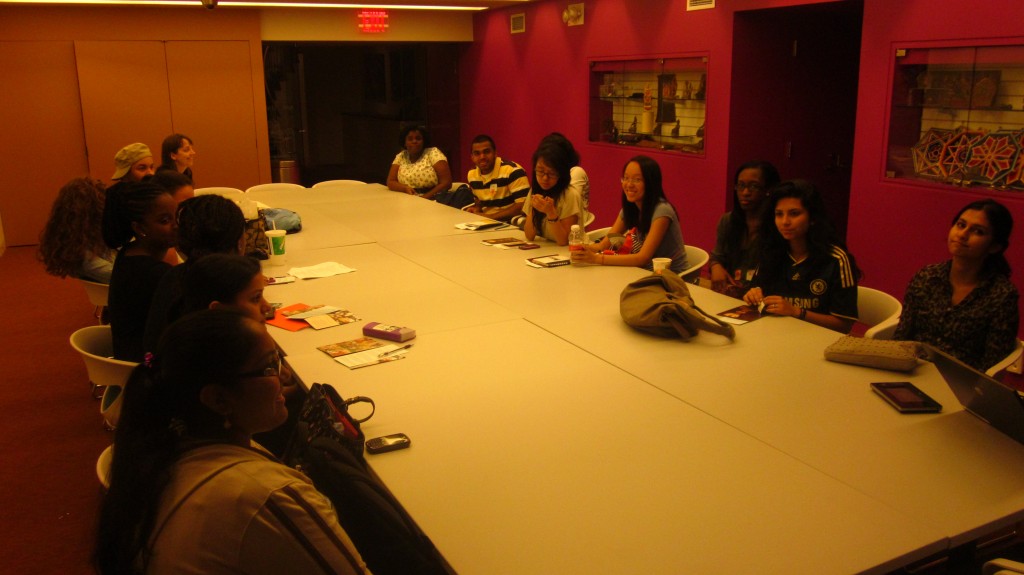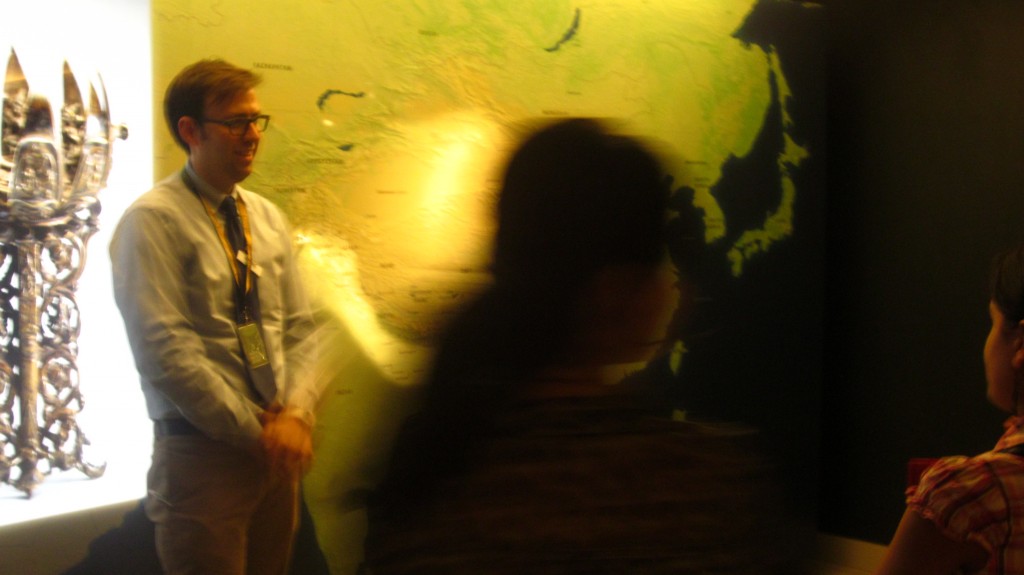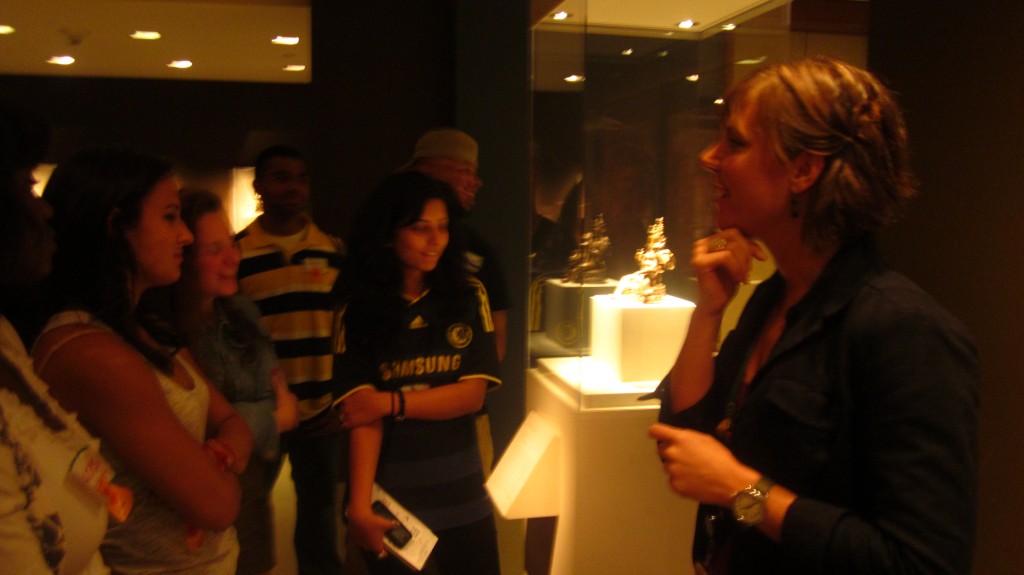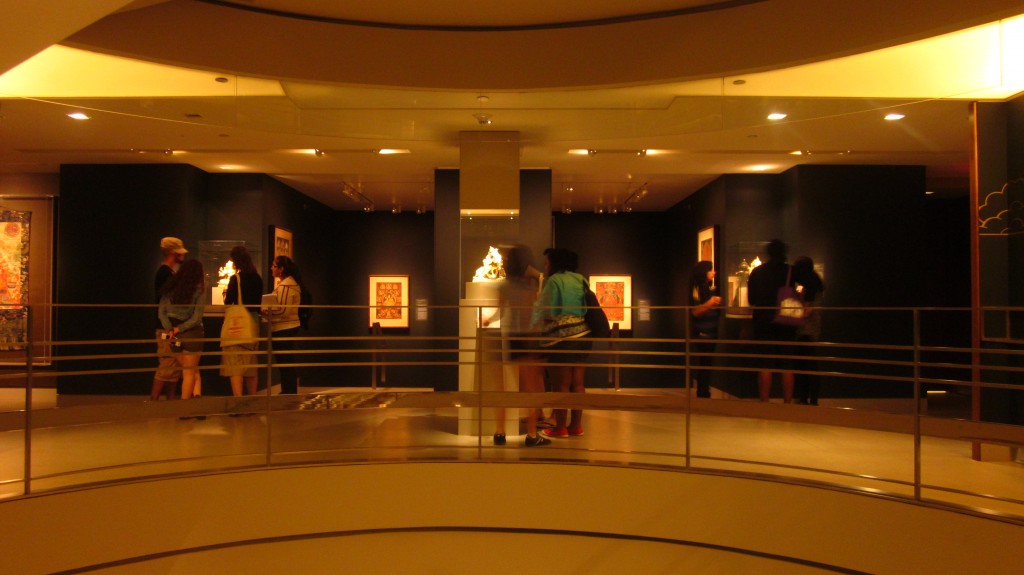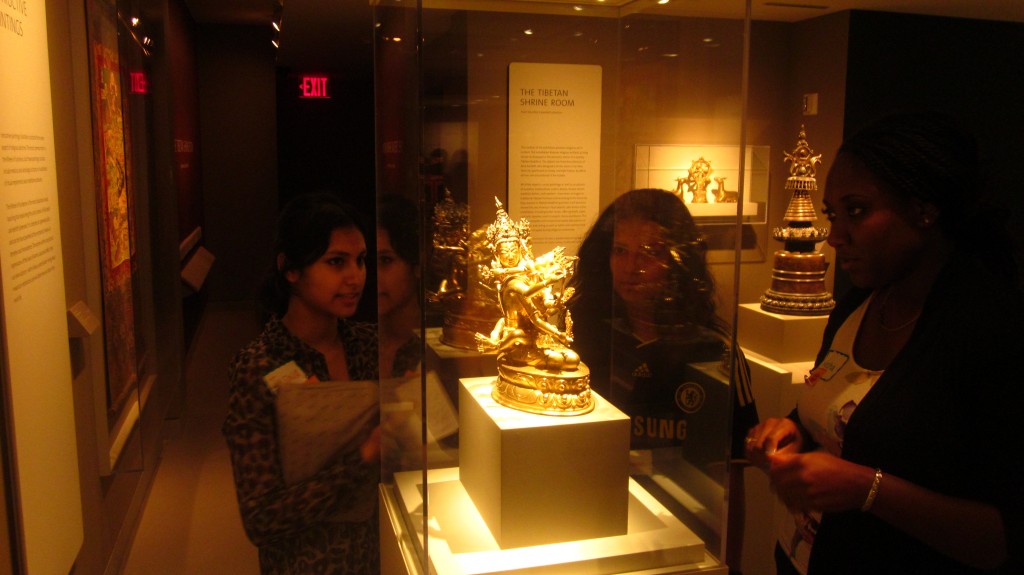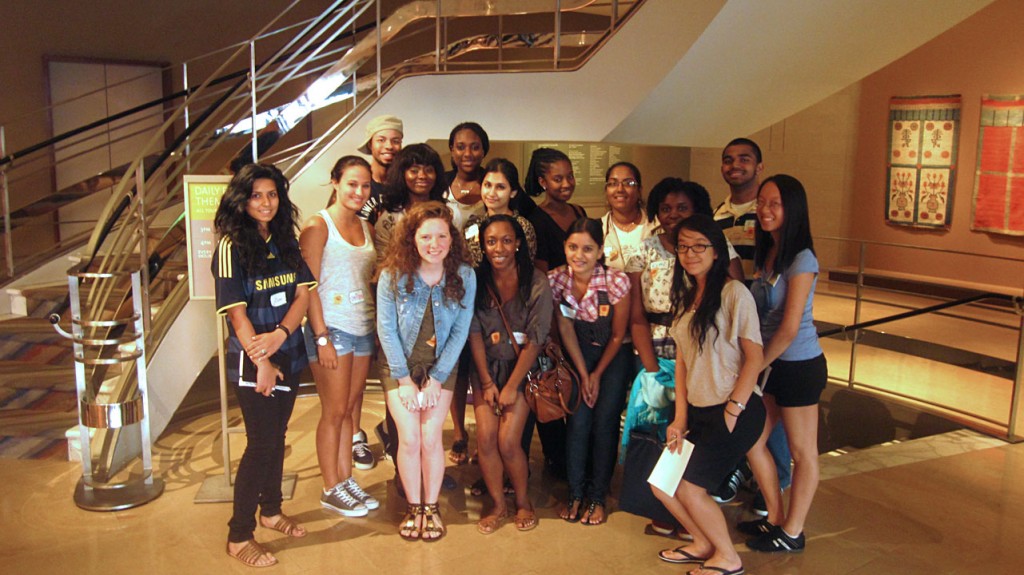 The Rubin Museum of Art hosted a full day seminar for Fall 2011 Baruch College Peer Mentors on August 12. The museum has an in-depth partnership with Baruch that was established in 2010 and includes intensive visits from incoming freshman and transfer students, and a faculty fellows program that links university curriculum to the museum. Last academic year, close to 600 Baruch freshman visited the museum through the Freshman Seminar Program. Many freshman students in 2010 visited on their own or through loosely organized visits facilitated by Baruch Peer Mentors. After student, faculty and museum educator evaluation, the Rubin/Baruch team decided to strengthen the connection of the Freshman Seminar program (a class that all Baruch freshman must complete that offers a number of exciting out-of-college experiences) by engaging and developing peer mentors to facilitate excellent museum visits.
The Rubin Museum of Art hosted a full day seminar for Fall 2011 Baruch College Peer Mentors on August 12. The museum has an in-depth partnership with Baruch that was established in 2010 and includes intensive visits from incoming freshman and transfer students, and a faculty fellows program that links university curriculum to the museum. Last academic year, close to 600 Baruch freshman visited the museum through the Freshman Seminar Program. Many freshman students in 2010 visited on their own or through loosely organized visits facilitated by Baruch Peer Mentors. After student, faculty and museum educator evaluation, the Rubin/Baruch team decided to strengthen the connection of the Freshman Seminar program (a class that all Baruch freshman must complete that offers a number of exciting out-of-college experiences) by engaging and developing peer mentors to facilitate excellent museum visits.
The museum has been approached a number of times to help train or develop university students to facilitate tours of the collection (a process that normally requires countless hours of training, observation and hands-on experience for our professional museum educators and volunteer docents). For this program we focused on the idea of creating an engaging, positive museum experience that would excite newly minted freshman to feel welcome in all museums. By using this concept as a guiding principle, the pressure was off the peer mentors to become masters of Himalayan Art, and feel more comfortable with the environment of the museum and the logistics of bringing a group of students on a field trip.
To begin the day students received an address from Professor Stan Altman, director of the American Humanics Project at Baruch on how broadly Barnard Baruch thought about projects. Baruch prides itself of being a top notch business school in the CUNY system -in fact their slogan is, “Baruch means Business.” Baruch does mean business for the public, but to faculty and administration that’s just the beginning. The Rubin Museum and Baruch partnership is just one of the many ways Baruch broadens curriculum for students to extend out into the vast resources of New York City.
Before we ventured into the museum, we asked the fifteen peer mentors to discuss their favorite and most dissapointing museum experiences. For the students, favorite experiences included visiting museums that had engaging atmospheres, were interactive, and where the students were allowed to have social experiences with each other. Disappointing experiences in museums were those in which students felt trapped by tour guides or ones in which there were mismatched expectations.
Once we moved into the museum, students were able to walk through the process of bringing a group of other students through our orientation process. We facilitated a structured experience that focused on the basics of six different highlight pieces, including our multimedia Map of the Himalayas and the Materials and Techniques section of the Gateway to Himalayan Art Exhibition.
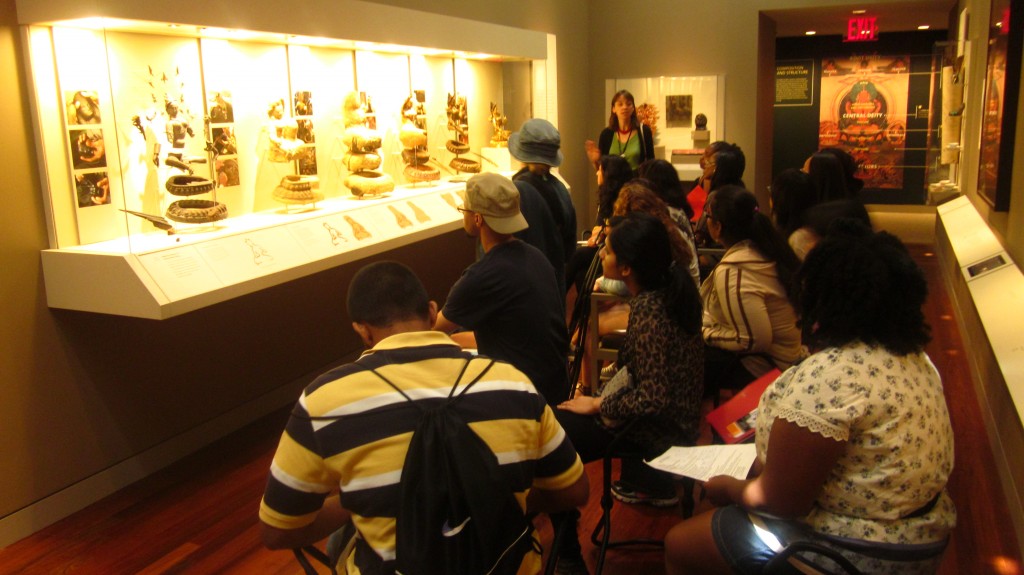
Assistant Manager of Univerisity Programs & Partnerships Laura Lombard explores materials and techniques of Himalayan Art with Baruch students.
After a short lunch break, the students went through a Visual Thinking Strategies session with three pieces where they were able to experience facilitating an inquiry experience without having to know too much about a particular work of art.
After the experience, students visited the galleries on their own to find a piece that interested them, and the worked in small groups to practice leading inquiry based experiences.
One intrepid student offered to experiment leading the entire group in a facilitation of a piece, and the day culminated with a review of resources that students could review and lead their mentees to if they are not able to provide the answers.
The biggest benefit to the day was that the Peer Mentors were able to practice the act of visiting the museum with a group, feeling more empowered and prepared for their fall assignments. They’ll have one more chance to practice in a few weeks with a larger group of Peer Mentors for a practice run. The more time students are able to be in the museum, the more comfortable we hope they will become, making the museum a vital resource to the Baruch community.



